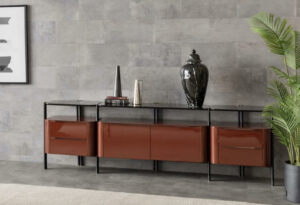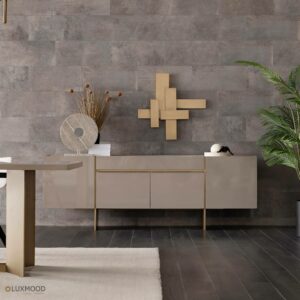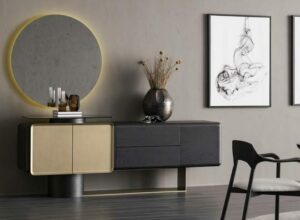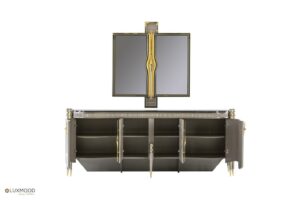Unraveling the Distinctions: Sideboard, Buffet, and Credenza Explained
When it comes to furnishing our living spaces, we often encounter terms like sideboard, buffet, and credenza. These pieces of furniture share similarities, but they also possess distinct characteristics. In this blog post, we’ll explore the differences between sideboards, buffets, and credenzas, shedding light on their unique features and purposes. By the end, you’ll have a clear understanding of each term and be better equipped to choose the right furniture for your home.
Sideboard:
A sideboard is a versatile storage piece traditionally used in dining rooms or kitchens. It typically features a flat top surface, often used for serving food or displaying decorative items. Sideboards are known for their elongated shape and are usually equipped with cabinets, drawers, or shelves for ample storage. They are designed to hold serving ware, linens, and other dining essentials.
Buffet:
Similar to sideboards, buffets are also found in dining areas. The term “buffet” often refers to a specific type of sideboard, distinguished by its long length and lower height. Buffets are primarily used for serving meals or displaying dishes during gatherings or special occasions. They typically lack an upper hutch or display space, focusing more on providing ample surface area for food and storage space beneath.
Credenza:
Credenzas, on the other hand, are multifunctional furniture pieces that can be used in various settings. Originally, they were small, low cabinets used for storing dishes or food in dining rooms. However, modern credenzas have evolved to become stylish and functional storage units that can be used in offices, living rooms, or even bedrooms. Credenzas often have a longer and lower profile, similar to buffets, but may feature a combination of open shelves, drawers, and cabinets.
Key Differences:
1. Height and Length:
Sideboards and buffets tend to have taller profiles, whereas credenzas are typically lower to the ground. Buffets are usually longer and narrower compared to sideboards, whereas credenzas can vary in length depending on their intended use.
2. Purpose and Functionality:
Sideboards and buffets are primarily used in dining areas to store and display serving ware. They offer storage solutions specifically tailored to dining needs. Credenzas, on the other hand, have a broader scope of application. They can be utilized as storage units, media consoles, or even workstations, depending on the space and purpose.
3. Design and Style:
Sideboards and buffets often feature more ornate designs, with intricate carvings and decorative elements. Credenzas, in contrast, embraces a sleeker and more minimalist aesthetic, catering to modern and contemporary interiors.
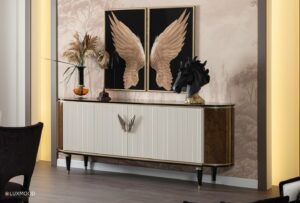
Understanding the differences between sideboards, buffets, and credenzas empowers you to make informed decisions when furnishing your home. Sideboards and buffets serve as elegant storage and display units in dining areas, while credenzas offer versatility and functionality across various spaces. By considering your needs, style preferences, and available space, you can choose the perfect furniture piece to enhance both the aesthetics and functionality of your living environment.






